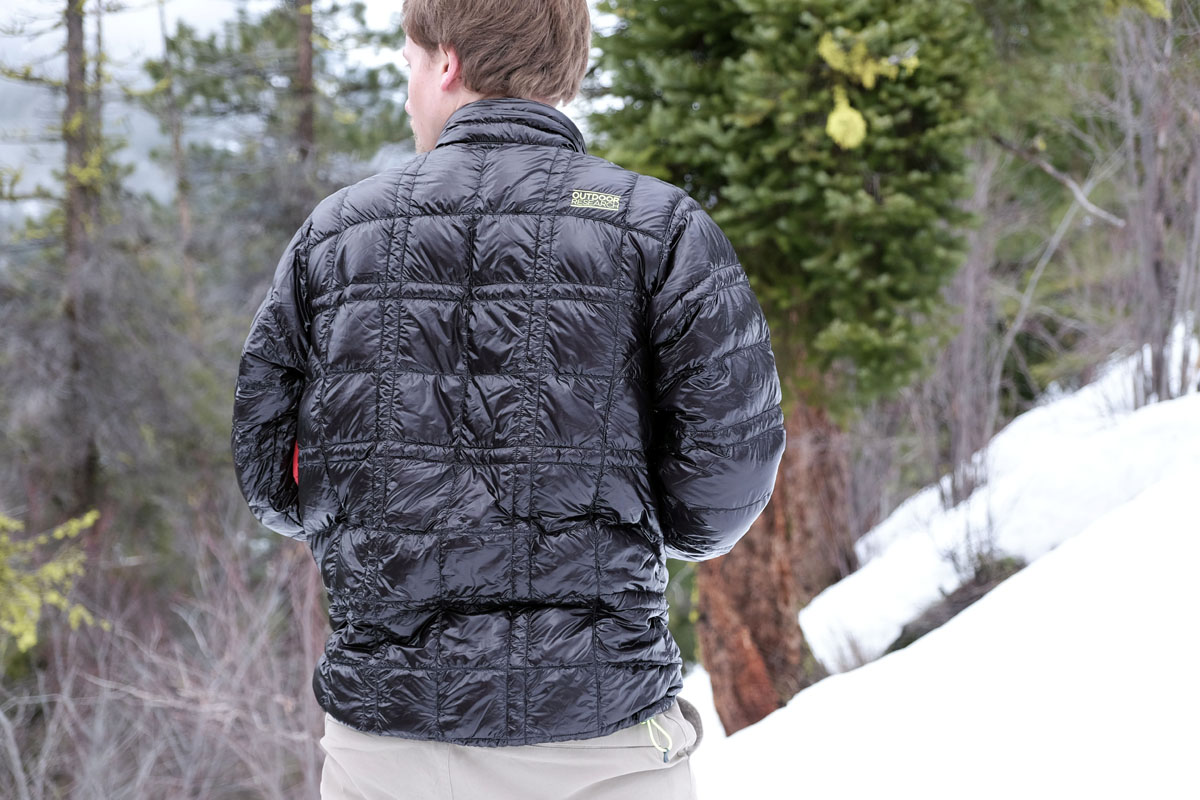
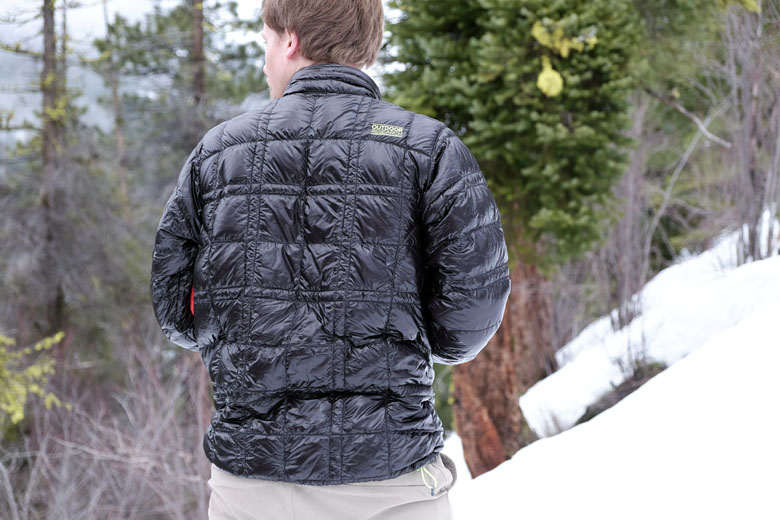


With the ultralight down jacket market dominated by a number of $300-plus options, the Outdoor Research Filament Down Pullover is an intriguing jacket at $225 (and we’ve often see it on sale for considerably less). Although it’s primary use is a midlayer for skiing and other winter sports, it also makes a great minimalist down jacket for summer hiking and backpacking. To see how the Filament stacks up against the competition, see our article on the best down jackets. For better wet-weather performance, we’ve tested and written about the leading synthetic jackets.
The Outdoor Research Filament falls on the lighter end in terms of fill weight, and despite using a high quality down, you still notice that it’s not a major heater. From our experience, independent of the specs, it has less loft and feels slightly less warm than other ultralight down jackets. The jacket still provides good warmth for the weight, resists wind well, and doesn’t feel cheap by any means, but it doesn’t offer the same warmth as options like the Patagonia Ultralight or Arc’teryx Cerium LT. For use as midlayer, this level of warmth may be beneficial for movement-based activities as opposed to sitting around and bundling up at the end of the day. We were comfortable hiking with the Filament and a lightweight base layer in temperatures that dropped into the low 30s, but were reaching for something warmer later on at night. Having a bit less down is also a way that Outdoor Research can keep weight and cost lower than the competition. Your needs will dictate whether or not it’s a deal breaker. 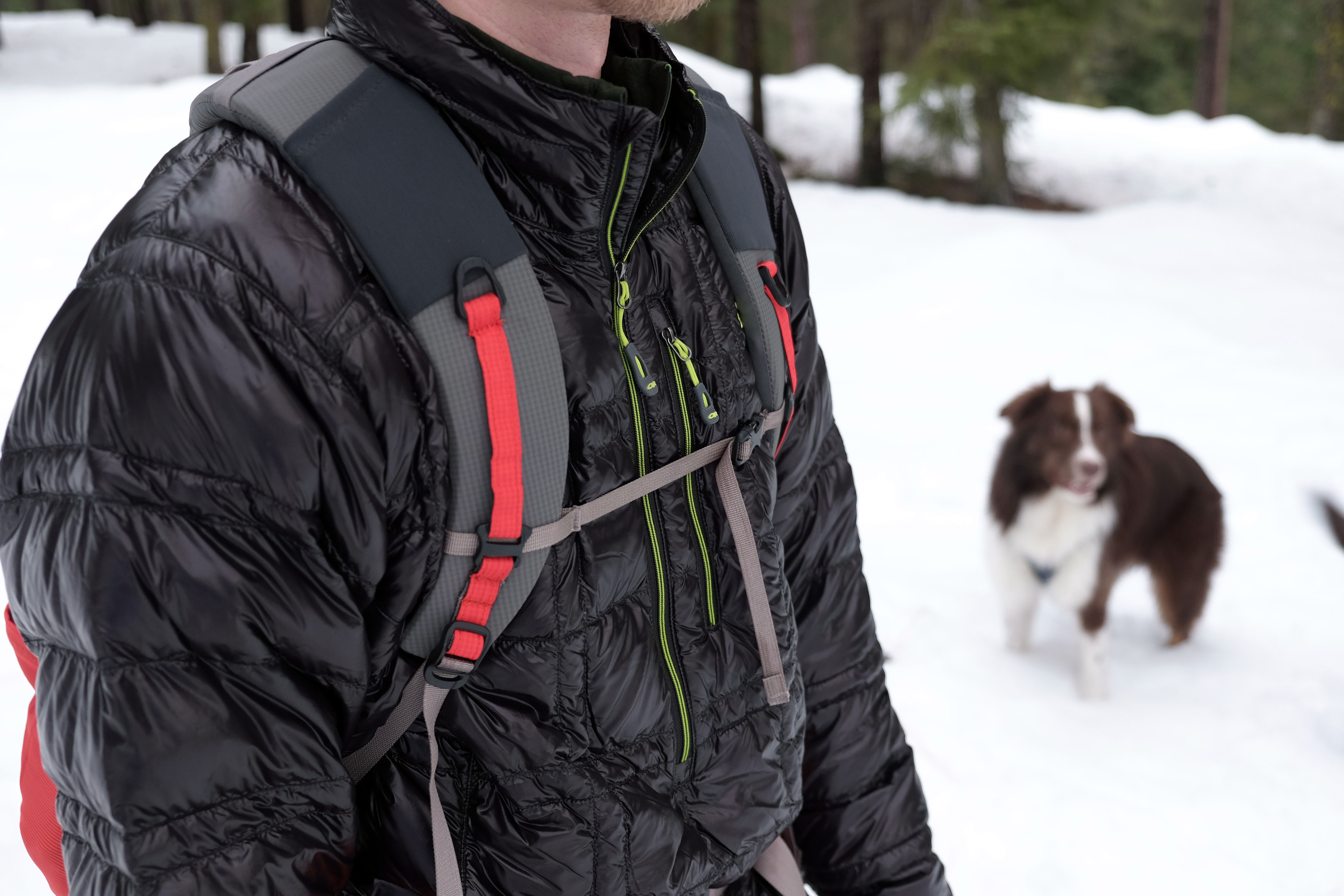
The Filament Pullover weighs 7.05 ounces for a medium on our scale. To compare apples to apples, the following are the listed weights for non-hooded ultralight down jackets: Mountain Hardwear Ghost Whisperer (7.2 oz.), Patagonia Ultralight (8.3 oz.), Arc’teryx Cerium LT (8.6 oz.). The Montbell Ex Light weighs a ridiculous 5.6 oz. and only comes in a hooded version. Because the Ex light and Ghost Whisper both have 7D shells (more on denier below), the Filament Pullover is the lightest down jacket we’ve tested with a 10D shell.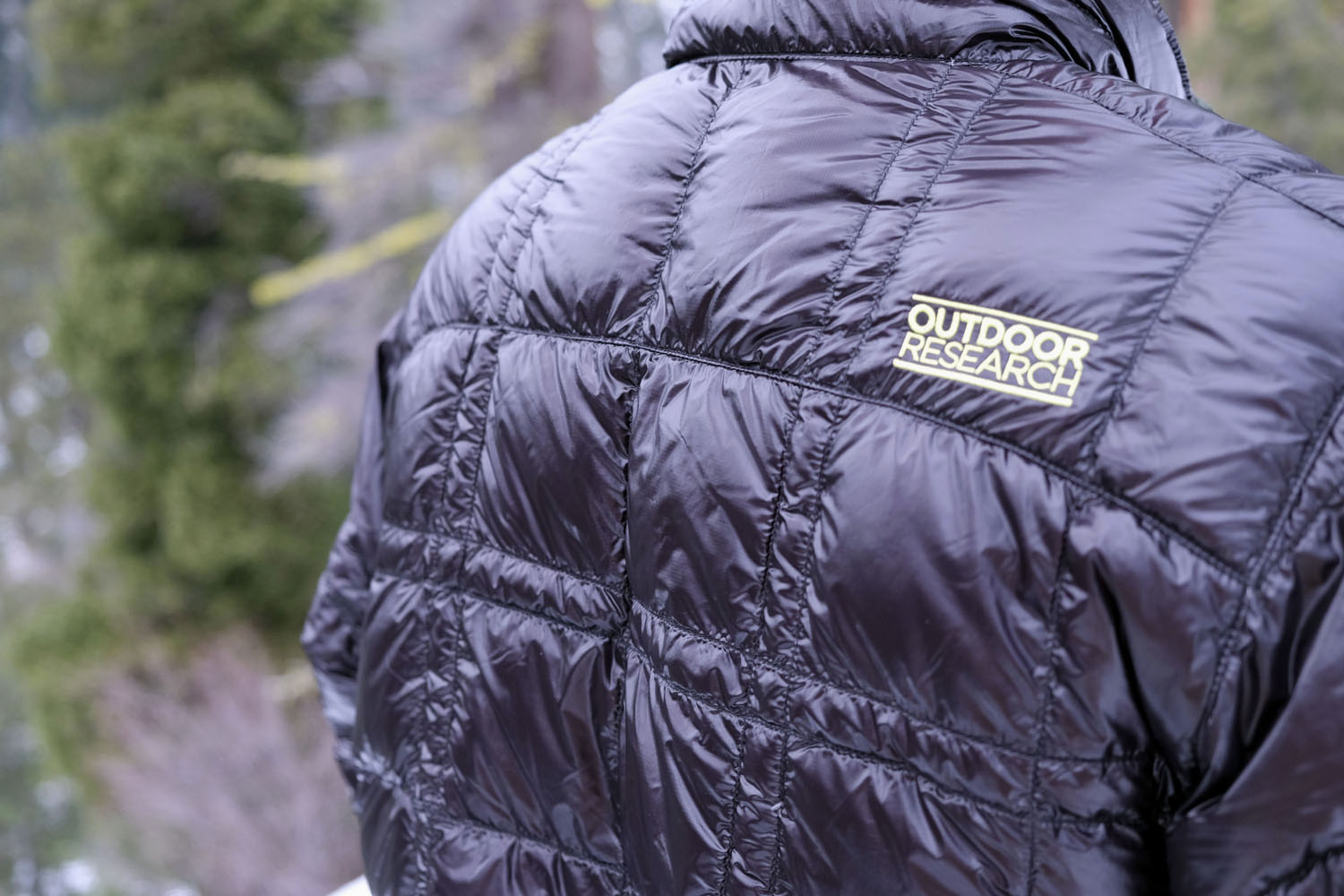
The Filament Pullover uses 800-fill-power down. 900-fill-power down is the absolute highest rating, but anything 800-fill and above is considered to be high quality. For comparison, the Patagonia Ultralight and Ghost Whisperer use 800-fill down, the Cerium LT is 850-fill down, and the Ex Light uses 900-fill down. The fill power numbers are calculated based on how much loft there is in one ounce of down clusters. Because down’s loft (how much space the down take up) equates with warmth, the more loft you get in that one ounce the better.
Outdoor gear companies are quick to promote fill power but less so fill weight (the actual amount of down inside the jacket). As an example, just because the Filament and the Ultralight from Patagonia use the same 800-fill-power down, does not mean they used the same amount of it; thus, you don’t yet know if they’ll be equally as warm (we cover warmth below). The Filament has 1.76 ounces of down insulation, which puts it on the very lightweight end—even for an ultralight piece. For some perspective, the next lowest fill weight in our test was the Ghost Whisperer, which had 2.78 ounces.
The weight of a thread is measured in denier (abbreviated with a “D” or “d”), and the lower the number the lighter the weight. Generally, a lower denier rating means the material is less durable and more prone to abrasion (there is some variation here as not all threads of the same denier are identical). A common way outdoor companies cut weight for ultralight gear is by using low denier threads (and therefore low weight) for the shell. For down jackets, the ultralight options range from 7D to 20D, and your typical down sweaters are 20D to 40D.
The Outdoor Research Filament Pullover has a 10D shell, higher than the more fragile 7D shells on the Montbell Ex Light and Mountain Hardwear Ghost Whisperer. You can feel the difference between 7D and 10D shells, and the extra thickness combined with the high quality Pertex shell fabric makes the jacket more likely to last longer and avoid tears from rocks and branches. It also makes the Filament’s weight of just over 7 ounces more impressive. 10D still is fairly low on the spectrum, but we value the uptick from 7D.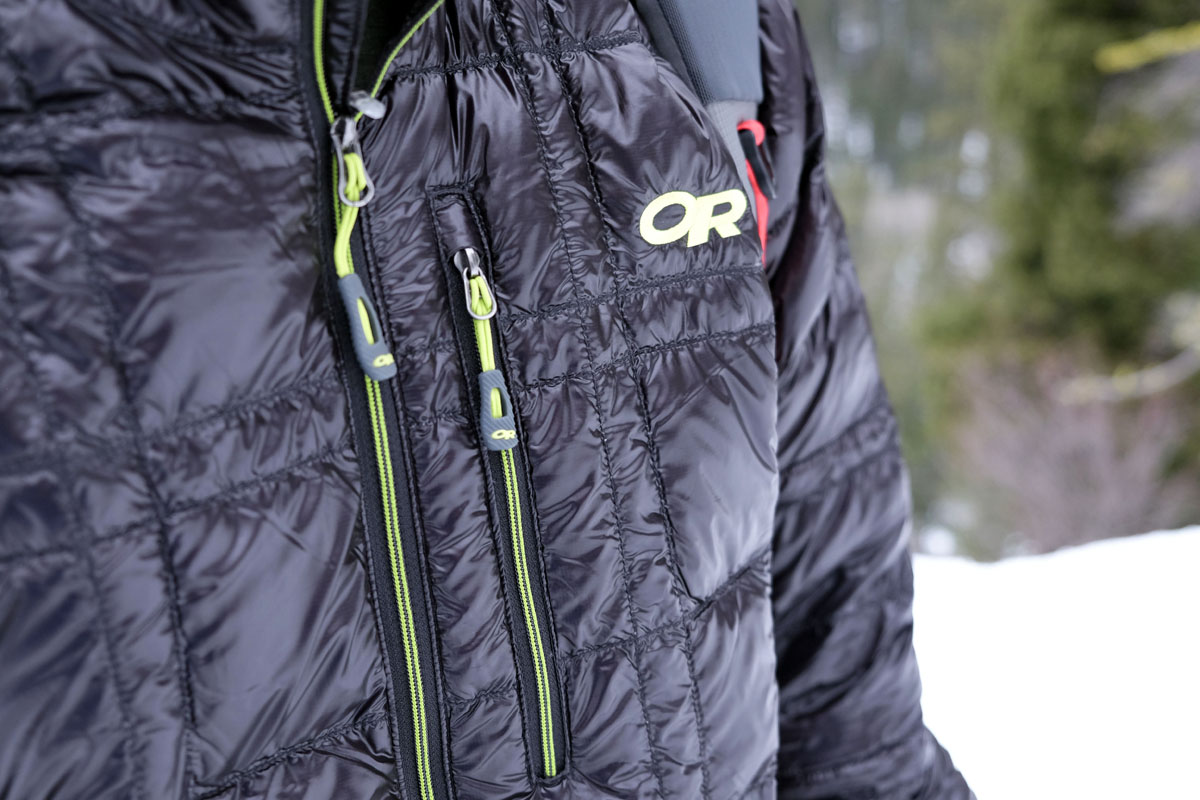
The Filament Pullover has a comfortable athletic fit and is true to size. The jacket sits just below the waist, is long enough in the torso and sleeves, and gives you a good range of motion in the shoulders. Uncinched, it should have enough room for larger frames, and the single cinch on the right side allows smaller people to make adjustments without the jacket feeling like it is pulled to that side (this can happen with some side cinches). We tested a medium, which worked great for two of our testers with slim builds at 5’10” and 6’1”.
We also like how the Filament Pullover sleeves sit on the wrists: the elasticized cuffs hold the jacket in place at the wrist while allowing the insulation to overlap by a few millimeters. This makes for a clean fit and look that is functional by adding warmth to the base of the hands without overlapping too far like some others (particularly the Mountain Hardwear Ghost Whisperer).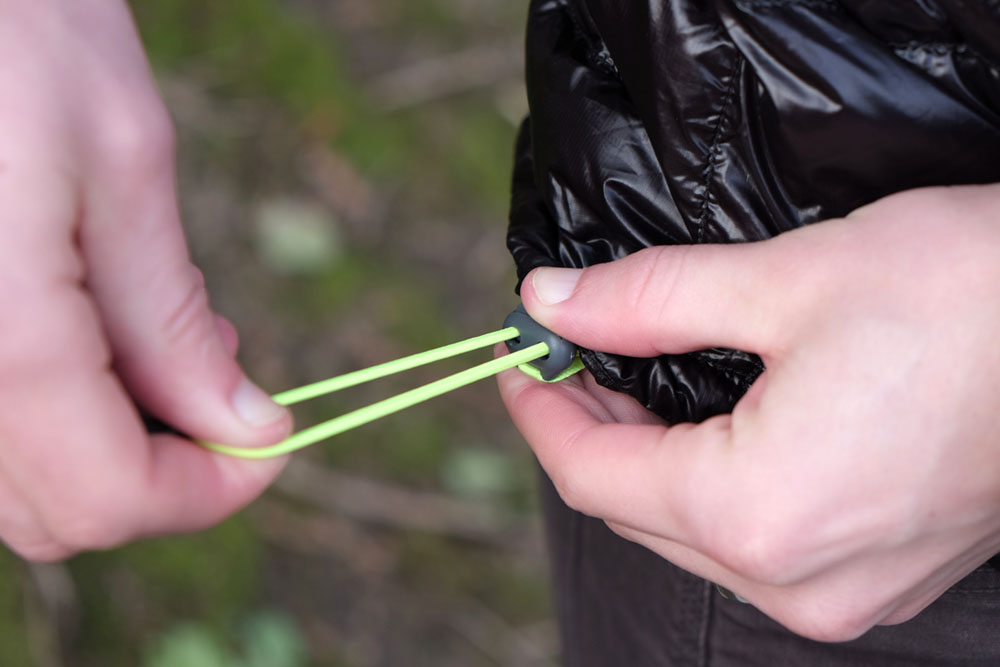
This jacket is a pullover style, meaning that the zipper only extends down the top half of the jacket and you have the pull it over your head to put it on. You often see this style from alpine-centric brands like Montbell and Brooks Range, largely to save zipper weight and retain warmth. Like the Helium II, Outdoor Research’s popular ultralight rain jacket, the Filament Pullover does not have hand warmer pockets (it has just one a chest pocket on the left side). We don’t mind these omissions when using the jacket as a midlayer, but they do make city use or functionality as an outer piece more challenging. Regardless of where you are, it’s always nice to have a place to put your hands when it’s chilly.
The Filament Pullover does not have a hooded version, and from our communication with Outdoor Research, the company has no intention of manufacturing one. This makes sense given OR’s focus on skiing: the Filament Pullover makes a great winter midlayer and hoods are less popular for this type of use. For climbers and backpackers, not having the option of a hood may be a disappointment. The other four jackets in our ultralight category have a hooded version available or are only hooded (Montbell Ex Light).
Once pulled over your head, the Filament is surprisingly comfortable and almost feels like you aren’t wearing a down jacket at all. The construction is first rate with clean and consistent stitching. The baffle design is unique but good looking, with offsetting large squares framed with smaller baffles. In terms of feel, the Pertex Quantum GL fabric feels high quality but is not as soft as jackets like the Patagonia Ultralight or Arc’teryx Cerium LT. It’s more of a slippery smoothness than plush like those more expensive offerings. You also notice the DWR treatment on the jacket more than others, giving it a slightly tacky feel. The materials are also a bit noisier than most other ultralight jackets when you’re being active, like hiking, but it still doesn’t compare to the plastic bag sound and feel of the Montbell Ex Light.
The tack and gloss of this jacket might be off-putting to some. We tested the Filament in black, and during a brainstorming session the unfortunate comparison to a trash bag was used. We really like the green hops/evergreen color, as well as the blue abyss/hydro, and would have opted for one of those given a second chance. The black/lemongrass doesn’t actually look or feel like a trash bag, but you get the idea.
This Filament stuffs down easily into its own chest pocket. The rectangular stuffed size is incredibly small, in fact it was the most petite in our entire test, measuring roughly: 9.5 x 4.5 x 3.75 inches (LxWxH). By using the chest pocket and two-sided zipper, you won’t need to carry around (and potentially lose) an extra stuff sack, but be careful when stuffing the jacket not to catch any zippers. With down jackets in general, and particularly ultralight down jackets, it’s important to unstuff the jacket when it’s not in use. Keeping it compressed for too long can force feathers out and ultimately reduce the jacket’s warmth and lifespan.
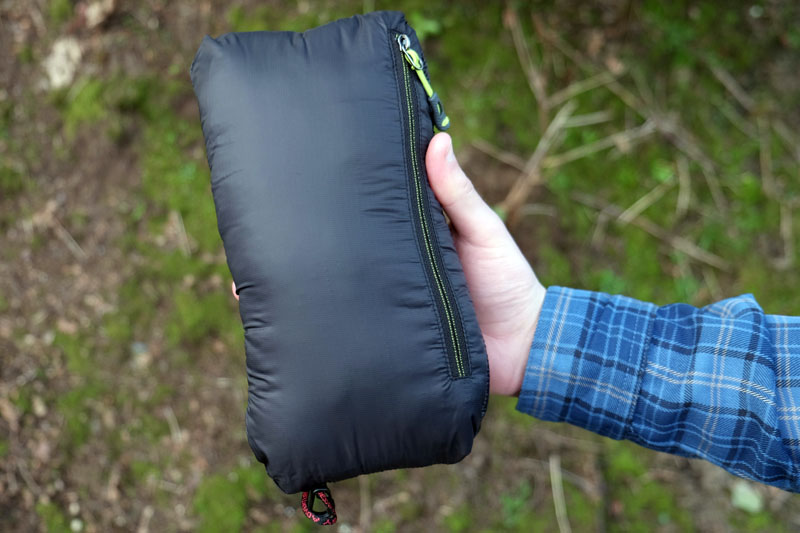
The Outdoor Research Filament is inexpensive compared to the other leading ultralight down jackets. It makes a great midlayer for skiing, and given OR’s strong allegiance to the sport, you could argue that winter sports are the Filament’s primary intended use. With a $225 list price that consistently goes on sale on various retailers—we’ve seen it available at around $150 quite frequently including at the time of publication—it makes a solid hiking and backpacking option as well.
The lack of hand warmer pockets or a hooded version, combined with slightly less warmth than the competition, makes the Filament less attractive for serious alpine use. But for hikers who want to stash a lightweight down jacket in their backpack during most three-season conditions, it’s a nice choice. It also should perform well as an outer layer for hiking during the shoulder seasons. Given the pullover-style and lack of pockets, it isn’t ideal for city use.
In terms of value, not everyone wants to spend $350 or more for an ultralight down jacket. If you’re a frequent skier, this is an awesome midlayer. If you do a handful of hiking or backpacking trips each year, the Filament gives you a quality lightweight down jacket option that won’t break the bank. If you can grab it for under $200, we think it’s a steal.